You are using an out of date browser. It may not display this or other websites correctly.
You should upgrade or use an alternative browser.
You should upgrade or use an alternative browser.
TerraLiner:12 m Globally Mobile Beach House/Class-A Crossover w 6x6 Hybrid Drivetrain
- Thread starter biotect
- Start date
Leipo
New member
only dutch sources and television interviews
like: http://nl.wikipedia.org/wiki/Gerard_de_Rooy (use a translator to translate to english)
with the CBE design the hard blows off-road don't jolt through his spine like it would in a COE truck.
I experience the same in my VW Vanagon: your body travels a lot more up and down compared to the passengers behind the front axle
like: http://nl.wikipedia.org/wiki/Gerard_de_Rooy (use a translator to translate to english)
with the CBE design the hard blows off-road don't jolt through his spine like it would in a COE truck.
I experience the same in my VW Vanagon: your body travels a lot more up and down compared to the passengers behind the front axle
charlieaarons
Explorer
A couple of comments:
1) my road view and offroad view is outstanding in my U500. I can even see my front winch operating. The U500 is essentially COE with a very small bonnet.
2) Earthroamer doesn't mention that for many Ford diesel engine maintenance evolutions the ENTIRE CAB needs to be REMOVED!!! Hard to do in the Sahara, also hard to do with the luton type overhang of the camper.
They could have gotten around that with a Zetros style forward tilting bonnet. Their own F6/750 based XV-HD has the forward tilting bonnet, much better access to motor than the classic American rear tilting bonnet cover, leaving fenders in the way.
Also - I think you could have what you desire if a camper mfg were willing to attach the cab to the camper and suspend the entire assembly on a Unimog style diamond shaped flex-mount. But a lot of engineering goes into my U500 cab mounts: 3 point suspension, coil spring shock absorbers. And there is the issue of tilting the cab to access the engine.
Charlie
1) my road view and offroad view is outstanding in my U500. I can even see my front winch operating. The U500 is essentially COE with a very small bonnet.
2) Earthroamer doesn't mention that for many Ford diesel engine maintenance evolutions the ENTIRE CAB needs to be REMOVED!!! Hard to do in the Sahara, also hard to do with the luton type overhang of the camper.
They could have gotten around that with a Zetros style forward tilting bonnet. Their own F6/750 based XV-HD has the forward tilting bonnet, much better access to motor than the classic American rear tilting bonnet cover, leaving fenders in the way.
Also - I think you could have what you desire if a camper mfg were willing to attach the cab to the camper and suspend the entire assembly on a Unimog style diamond shaped flex-mount. But a lot of engineering goes into my U500 cab mounts: 3 point suspension, coil spring shock absorbers. And there is the issue of tilting the cab to access the engine.
Charlie
Last edited:
mog
Kodiak Buckaroo
The only major advantage of a COE design that I can see, is that by reducing the length of Cab + Engine, the overall available length for a camper-body increases for any given wheel-base size. But given a choice between a COE vehicle that’s 11 m long overall, versus a CBE vehicle that’s 12.4 or 12.6 m long, because the engine bonnet adds 1.4 – 1.6 m of length, it seems that CBE vehicle is preferable. Given all the considerations above – and especially the design-problem of locating an alcove area above a COE cab that has to tilt forwards – CBE seems hands-down superior.
Certainly in the case of a Straßenriesen adding an additional 10-15% in length by not using a COE design does not make much of a different, as the vehicle is quite long already.
On 'lesser' vehicles such as my Fuso, the difference of 1.5 meters on my 5.33 meter truck, equals a 28% shorter (more maneuverable) vehicle.
The COE design also adds a great deal to visibility both in height and forward 'close' navigation.
But on very large vehicles the CBE would be better, as long as engine access is not effective as others have pointed out.
The rear engine such as on large American style 'pusher' motorhomes sure has an advantage as to lack of noise and vibration when driving and leaves a huge unobstructed forward cabin that is useful for 'living'.
biotect
Designer
charlie, mog, egn, grizzlyj,
As near as I can tell, for those who already own a Euro-style COE vehicle, or an “almost COE” vehicle (like a mog), the main advantages of COE are visibility, visibility, and visibility. No front-end blind-spots – see http://en.wikipedia.org/wiki/Blind_spot_(vehicle) .
But is “that-rock-is-15-cm-in-front-of-my-front-tire" visibility really necessary? If it were so critical, then why did Mercedes deliberately choose CBE for the Zetros? Is this level of forward visibility necessary for most overland driving, i.e. for the 90 % of the potential customers who have no interest in rock-crawling? After all, if you see a big rock 20 m away, and you make no effort to avoid it, then what good will seeing it up super-close do you, when it's just 15 cm from your front tire? On the other hand, if you want that big rock to be just 15 cm away from your front tire, then you are probably rock-crawling. But should an 8 -10 m 6x6 vehicle be designed for rock-crawling? And if not, then is COE-type visibility -- up close and personal with the rocks -- really necessary?
I am also trying to square your comments with other things that I have read, which suggest that driving with nothing but a glass wall separating you from the things that you may be about to hit, is experienced by most drivers as incredibly stressful.
Furthermore, many will argue that in the event of a front-end collision, having a big engine and a few I-beams between you and what you are about to hit couldn't hurt. At least there will be a “crumple zone” to absorb impact – see http://en.wikipedia.org/wiki/Crumple_zone . In North America, insurance companies don't like COE, because there's a greater risk of injury to the driver. As many Americans truck drivers will joke on threads that compare COE versus “conventional” (i.e. CBE), with a cab-over you are guaranteed to be “first on the scene of an accident….” :sombrero:
*************************************
A bit further along I will post more web-links to those American discussion threads. If you are European, you might be surprised to see discover that:
(a) Large COE semi trucks have all but disappeared from American roads
and
(b) North American truckers do not miss them. On comparative discussion threads, American truckers have very little good to say about COE. They view COE designs as merely profit-driven, devised to maximize cargo capacity behind the cab, the unloved stepchildren of unfortunate European legislation that limits overall vehicle length, and not just trailer length. They will argue that driver safety, health, and comfort is the very last thing that COE designs were devised to maximize. If these were genuine concerns, then all European semi cabs would be CBE.
Furthermore, grizzlyj seems to indicate that the Zetros bonnet is sufficiently short that forward blind-spots are not a big issue.
And then there's that “rough ride” factor, which Leipo so deftly summarized:
I don't want to do a round-robbin asking about nationalities, but I suspect that in addition to egn, who is German, the rest of you are also European? It could be a nationality thing. I've had the same discussion with academic colleagues in transportation design, and what always astonishes me is how European born/raised designers seem to abhor the mere appearance of a truck with a snout…. :yikes:
Whereas North American transportation designers (or part-North-Americans like myself), usually have a serious fetish for long-nosed semi rigs. My personal favorite is the Navistar International Lonestar, especially the Harley Davidson Special Edition – see http://www.internationaltrucks.com/Trucks/Trucks/Series/LoneStar/ , http://jalopnik.com/5175919/interna...davidson-special-edition-a-truck-for-real-men , http://www.gizmag.com/navistar-unveil-international-lonestar-big-rig/8785/ , http://www.topgear.com/uk/car-news/lonestar-harley-davidson-2009-03-20 , http://www.autoblog.com/2009/03/19/nevermind-ford-its-the-international-lonestar-harley-davidson/ , http://www.autoblog.com/photos/international-lonestar-harley-davidson-special-edition/ , and http://www.caranddriver.com/reviews...onestar-harley-davidson-special-edition-video :






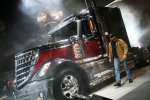

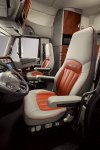
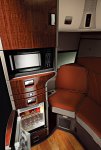
[video=youtube;cb3HBoDhT1E]http://www.youtube.com/watch?v=cb3HBoDhT1E [/video]
*************************************
But I digress.
Returning to the topic at hand, there exist a number of comparative threads which address COE versus CBE from an aesthetic angle – see https://uk.answers.yahoo.com/question/index?qid=20120815093403AARJUyB , http://boards.straightdope.com/sdmb/showthread.php?t=401835 , http://www.truckconversion.net/forums/f104/conventional-cabover-looks-best-4566/ , http://www.curbsideclassic.com/blog/the-rise-and-fall-of-the-coe-semi-tractor/ , and http://www.layover.com/forums/layovers-lounge-archive/t-cabover-vs-conventional-10220.html .
Some of the posts on this topic are a hoot. From the last link:
"Cabover vs. Conventional, been doggin' mankind since Noah let the animals off the ark. No, though it seems obvious that the terms refer to chassis styles, that's a fallacy. You are right in feigning ignorance on the supposed obvious.
Actually, in arguing the esoterics, Georg Wilhelm Friedrich Hegel (German, 1770-1831) took Ludwig Wittgenstein on a roundabout back in the early 1800's on the topic. Classic case; reknowned, Johnnie Cochran was involved long before the OJ case and his gun commercials. Ludwig later wrote poetry and held his pinkie just so. This has been discussed often on Layover, go to the archives.
Cabovers have the engine in front of the seating arrangement, i.e., there's a snout on the tractor. Cabover means that the Cab is looking Over the long nose and one can brace themselves before hitting the bridge pillar. Conventional hardly means 'standard'; it's a trick question used in game shows. The French translation loosely means 'FlatFace'; German-Dutch, 'Schneider'."
Yes, the above was posted on a trucker forum....:Wow1:
All best wishes,
Biotect
As near as I can tell, for those who already own a Euro-style COE vehicle, or an “almost COE” vehicle (like a mog), the main advantages of COE are visibility, visibility, and visibility. No front-end blind-spots – see http://en.wikipedia.org/wiki/Blind_spot_(vehicle) .
But is “that-rock-is-15-cm-in-front-of-my-front-tire" visibility really necessary? If it were so critical, then why did Mercedes deliberately choose CBE for the Zetros? Is this level of forward visibility necessary for most overland driving, i.e. for the 90 % of the potential customers who have no interest in rock-crawling? After all, if you see a big rock 20 m away, and you make no effort to avoid it, then what good will seeing it up super-close do you, when it's just 15 cm from your front tire? On the other hand, if you want that big rock to be just 15 cm away from your front tire, then you are probably rock-crawling. But should an 8 -10 m 6x6 vehicle be designed for rock-crawling? And if not, then is COE-type visibility -- up close and personal with the rocks -- really necessary?
I am also trying to square your comments with other things that I have read, which suggest that driving with nothing but a glass wall separating you from the things that you may be about to hit, is experienced by most drivers as incredibly stressful.
Furthermore, many will argue that in the event of a front-end collision, having a big engine and a few I-beams between you and what you are about to hit couldn't hurt. At least there will be a “crumple zone” to absorb impact – see http://en.wikipedia.org/wiki/Crumple_zone . In North America, insurance companies don't like COE, because there's a greater risk of injury to the driver. As many Americans truck drivers will joke on threads that compare COE versus “conventional” (i.e. CBE), with a cab-over you are guaranteed to be “first on the scene of an accident….” :sombrero:
*************************************
A bit further along I will post more web-links to those American discussion threads. If you are European, you might be surprised to see discover that:
(a) Large COE semi trucks have all but disappeared from American roads
and
(b) North American truckers do not miss them. On comparative discussion threads, American truckers have very little good to say about COE. They view COE designs as merely profit-driven, devised to maximize cargo capacity behind the cab, the unloved stepchildren of unfortunate European legislation that limits overall vehicle length, and not just trailer length. They will argue that driver safety, health, and comfort is the very last thing that COE designs were devised to maximize. If these were genuine concerns, then all European semi cabs would be CBE.
Furthermore, grizzlyj seems to indicate that the Zetros bonnet is sufficiently short that forward blind-spots are not a big issue.
And then there's that “rough ride” factor, which Leipo so deftly summarized:
There is a reason why Gerard de Rooy went for a CBE truck for the Dakar: his back problems were unbearable in a COE:

The only way he could continue racing trucks was if he went to the CBE design
I don't want to do a round-robbin asking about nationalities, but I suspect that in addition to egn, who is German, the rest of you are also European? It could be a nationality thing. I've had the same discussion with academic colleagues in transportation design, and what always astonishes me is how European born/raised designers seem to abhor the mere appearance of a truck with a snout…. :yikes:
Whereas North American transportation designers (or part-North-Americans like myself), usually have a serious fetish for long-nosed semi rigs. My personal favorite is the Navistar International Lonestar, especially the Harley Davidson Special Edition – see http://www.internationaltrucks.com/Trucks/Trucks/Series/LoneStar/ , http://jalopnik.com/5175919/interna...davidson-special-edition-a-truck-for-real-men , http://www.gizmag.com/navistar-unveil-international-lonestar-big-rig/8785/ , http://www.topgear.com/uk/car-news/lonestar-harley-davidson-2009-03-20 , http://www.autoblog.com/2009/03/19/nevermind-ford-its-the-international-lonestar-harley-davidson/ , http://www.autoblog.com/photos/international-lonestar-harley-davidson-special-edition/ , and http://www.caranddriver.com/reviews...onestar-harley-davidson-special-edition-video :










[video=youtube;cb3HBoDhT1E]http://www.youtube.com/watch?v=cb3HBoDhT1E [/video]
*************************************
But I digress.
Returning to the topic at hand, there exist a number of comparative threads which address COE versus CBE from an aesthetic angle – see https://uk.answers.yahoo.com/question/index?qid=20120815093403AARJUyB , http://boards.straightdope.com/sdmb/showthread.php?t=401835 , http://www.truckconversion.net/forums/f104/conventional-cabover-looks-best-4566/ , http://www.curbsideclassic.com/blog/the-rise-and-fall-of-the-coe-semi-tractor/ , and http://www.layover.com/forums/layovers-lounge-archive/t-cabover-vs-conventional-10220.html .
Some of the posts on this topic are a hoot. From the last link:
"Cabover vs. Conventional, been doggin' mankind since Noah let the animals off the ark. No, though it seems obvious that the terms refer to chassis styles, that's a fallacy. You are right in feigning ignorance on the supposed obvious.
Actually, in arguing the esoterics, Georg Wilhelm Friedrich Hegel (German, 1770-1831) took Ludwig Wittgenstein on a roundabout back in the early 1800's on the topic. Classic case; reknowned, Johnnie Cochran was involved long before the OJ case and his gun commercials. Ludwig later wrote poetry and held his pinkie just so. This has been discussed often on Layover, go to the archives.
Cabovers have the engine in front of the seating arrangement, i.e., there's a snout on the tractor. Cabover means that the Cab is looking Over the long nose and one can brace themselves before hitting the bridge pillar. Conventional hardly means 'standard'; it's a trick question used in game shows. The French translation loosely means 'FlatFace'; German-Dutch, 'Schneider'."
Yes, the above was posted on a trucker forum....:Wow1:
All best wishes,
Biotect
Last edited:
egn
Adventurer
Yes, a bonnet is ugly, ugly, ugly, ... 
I think that we agree that the designs in US and EU are mainly influenced by the corresponding legislation. 50 years ago most trucks in Germany had a bonnet, and most of them looked great.
I try to list all the disadvantages of all the variants for an integrated 6x6 off-road camper.
CBE:
COE:
CFE:
Mid engine:
Pusher:
Weight distribution is a very important issue for offroad vehicle. It should be equal on all axles with a tendency to have a bit more weight in the back to get best traction. Empty trucks have most of there weight in front. As an off-road vehicle should be as light as possible, especially if you build an 6x6, the truck will be still be heavy at front. This may be compensated by distributing the axles differently. Two steerable axles in front and one in back would be a solution.
The engine/transmission for such an vehicle will be large and heavy. Therefore it is critical where everything is placed. Most of the time engine and transmission build on large block, but it is also possible to separate engine and transmission like it is done with the MAN KAT1 8x8. This had to be done here because there was just no place because of the second steering axle.
Another point whether the vehicle uses permanent all-wheel drive, or switchable with mechanical, hydraulic or electrical transmission.
All this problems around engine placement and weight distribution brings me back to the idea of using a totally different propulsion system.
Shouldn't an advanced vehicle concept not only look at the interior and exterior design, but also at the propulsion system?
The trend goes towards hybrid and electric vehicles, not only because this is more fuel efficient and has lower emissions. It has also large advantages regarding power and torque, which is very important off-road. With an hybrid driveline it is possible to distribute all the components of engine/transmission all over the vehicle and most smaller components can be placed without much additional space.
So finally, all the discussion regarding CBE, COE, pusher, ... is moot for me at the moment, as long there is no final design decision regarding the propulsion system available.
I think that we agree that the designs in US and EU are mainly influenced by the corresponding legislation. 50 years ago most trucks in Germany had a bonnet, and most of them looked great.
I try to list all the disadvantages of all the variants for an integrated 6x6 off-road camper.
CBE:
- longer overall in relation to volume
- longer wheel base, larger turning circle without all-wheel steering,
- engine noise
- front visibility
- to much weight at front (6x6)
- long transmission driveline
COE:
- to much weight at front (6x6)
- engine noise
- high seating position
- high common floor level and total height
- bad service access to engine without tilt cab
CFE:
- to much weight at front
- engine noise
- no integrated one room design possible
- bad service access to engine without tilt cab
Mid engine:
- higher floor level
- special flat engine design necessary (underfloor engine)
- bad service access to engine
- all-wheel drive transmission complicated
Pusher:
- long driveline
- loss of floor length if engine is not concealed within/below furniture.
Weight distribution is a very important issue for offroad vehicle. It should be equal on all axles with a tendency to have a bit more weight in the back to get best traction. Empty trucks have most of there weight in front. As an off-road vehicle should be as light as possible, especially if you build an 6x6, the truck will be still be heavy at front. This may be compensated by distributing the axles differently. Two steerable axles in front and one in back would be a solution.
The engine/transmission for such an vehicle will be large and heavy. Therefore it is critical where everything is placed. Most of the time engine and transmission build on large block, but it is also possible to separate engine and transmission like it is done with the MAN KAT1 8x8. This had to be done here because there was just no place because of the second steering axle.
Another point whether the vehicle uses permanent all-wheel drive, or switchable with mechanical, hydraulic or electrical transmission.
All this problems around engine placement and weight distribution brings me back to the idea of using a totally different propulsion system.
Shouldn't an advanced vehicle concept not only look at the interior and exterior design, but also at the propulsion system?
The trend goes towards hybrid and electric vehicles, not only because this is more fuel efficient and has lower emissions. It has also large advantages regarding power and torque, which is very important off-road. With an hybrid driveline it is possible to distribute all the components of engine/transmission all over the vehicle and most smaller components can be placed without much additional space.
So finally, all the discussion regarding CBE, COE, pusher, ... is moot for me at the moment, as long there is no final design decision regarding the propulsion system available.
biotect
Designer
Quick question, egn:
Glad you brought up hybrid and electric.
In previous posts you've been dead-set against electrics for the chassis and engine. Your central concern has been ease of repair/maintenance in remote corners of the globe, where suitable mechanics or diagnostic equipment will not be available. So why would you propose hybrid or electric for such a vehicle? Even militaries that are well-funded and have internal, "in house" mechanics, are now deliberately buying mechanically and electrically simplified vehicles so that they don't have headaches in the field. I remember reading somewhere that military-spec G-wagens don't have electric windows, for exactly this reason. So why would you propose that an expedition vehicle like this should have an electric engine (or engines, plural... )?
)?
All best wishes,
Biotect
Glad you brought up hybrid and electric.
In previous posts you've been dead-set against electrics for the chassis and engine. Your central concern has been ease of repair/maintenance in remote corners of the globe, where suitable mechanics or diagnostic equipment will not be available. So why would you propose hybrid or electric for such a vehicle? Even militaries that are well-funded and have internal, "in house" mechanics, are now deliberately buying mechanically and electrically simplified vehicles so that they don't have headaches in the field. I remember reading somewhere that military-spec G-wagens don't have electric windows, for exactly this reason. So why would you propose that an expedition vehicle like this should have an electric engine (or engines, plural...
All best wishes,
Biotect
Haf-E
Expedition Leader
I've been involved with electric vehicles for over 20 years and I do think that the time is approaching soon for hybrid-electric expedition vehicles. The concern about the electronics in many of today's "modern" cars and trucks is due to single points of failure causing one to be stranded. With hybrid-electric designs its possible to build in redundancy into the system to allow effective "limp" modes in case of problems.
That said - I prefer vehicles without elaborate electronic systems myself - even though I am an electrical engineer - so go figure out that!
Since many of these large RV type expedition vehicles will also have the need for a fairly good sized generator - making the truck all electric (i.e. the generator powering the water heater, space heating, AC, cooking etc)when parked and also being a source of power for driving as well. This idea will make sense compared to having many multiple separate systems such as diesel cooktop, diesel hydronic heater, etc.)... Although This would probably require dual generators and a fairly large Li-Ion battery pack to allow driving at full speed for any distance.
I have seen a hydrid electric HUMVEE which had four separate electric motors (one per wheel) and a large diesel generator instead of an engine - it could do a lot of very interesting things - like tank steering where the wheels on each side turn opposite directions - and be able to run a full remote outpost at night off the generator - but the cost is still a bit to much for even the military.
There are also hybrid electric transit busses working this way - and, of course, the diesel electric locomotives have been doing it for a long time already.
That said - I prefer vehicles without elaborate electronic systems myself - even though I am an electrical engineer - so go figure out that!
Since many of these large RV type expedition vehicles will also have the need for a fairly good sized generator - making the truck all electric (i.e. the generator powering the water heater, space heating, AC, cooking etc)when parked and also being a source of power for driving as well. This idea will make sense compared to having many multiple separate systems such as diesel cooktop, diesel hydronic heater, etc.)... Although This would probably require dual generators and a fairly large Li-Ion battery pack to allow driving at full speed for any distance.
I have seen a hydrid electric HUMVEE which had four separate electric motors (one per wheel) and a large diesel generator instead of an engine - it could do a lot of very interesting things - like tank steering where the wheels on each side turn opposite directions - and be able to run a full remote outpost at night off the generator - but the cost is still a bit to much for even the military.
There are also hybrid electric transit busses working this way - and, of course, the diesel electric locomotives have been doing it for a long time already.
biotect
Designer
Hi egn,
*****************************************
1. Gallery of Tatra 6x6 Videos
*****************************************
You mentioned a Tatra 6x6 arrangement with two axles clustered in front, one in the rear. As luck would have it, I was investigating Tatra a bit more in any case, and came across some videos of the same.
1. The first one is a bit wild. It's for an 813 (see http://en.wikipedia.org/wiki/Tatra_813 , the predecessor of the 815), that deliberately flips itself on its side, and then recovers using wheels alone.
2.. The second is an 815 with the same arrangement of axles, and a V12 engine, doing polite pirouettes in a parking lot. At the end the camera gives an interior tour. Notice how the floor in the first row of the cab is totally flat, there is complete "through-cab" access, and no engine tunnel. But the engine does not seem to be placed CF, either. It seems like the engine is under the cab, but does not make much of a design-impact on the cab floor. As near as I can tell, there is a slight engine tunnel in the center of the second row of seats. It's not very noticeable, you have to look for it. It's a degree of "bulge" that would be completely compatible with a one-room, fully integrated design.
3. The third is a story about a Tatra 6x6, mud, and water: one thread participant claimed that heavy 6x6s could not handle such elements..….:victory:
4. The fourth has Tatra 6x6s zipping around (first half), and dealing with sand (second half).
5/6/. The fifth and sixth videos are Tatra 6x6 truck-trials.
7. The seventh is a compendium of various Tatra truck-trials.
8. The eight is a Tatra 6x6 in the snow.
9. The ninth features Tatras behaving very badly, destroying trees, etc.
10. And the tenth and last video is just crazy.
[video=youtube;TrMW7BpAc50]http://www.youtube.com/watch?v=TrMW7BpAc50 [/video]
I am in love with a bloody truck…..
For an enormous list of the 200 most "Popular Tatra & Six-wheel drive videos", see https://www.youtube.com/playlist?list=PLEWoaxZCukQkUGZF58MeN2ef0Z-ivvuOy .
And for an equally long list of 200 of the most "Popular Six-wheel drive & Off-roading videos", see https://www.youtube.com/playlist?list=PLKbaqaZkZJDIPWelhnR_dzzZCQ_ldb1js .
********************************************
CONTINUED IN NEXT POST
*****************************************
1. Gallery of Tatra 6x6 Videos
*****************************************
You mentioned a Tatra 6x6 arrangement with two axles clustered in front, one in the rear. As luck would have it, I was investigating Tatra a bit more in any case, and came across some videos of the same.
1. The first one is a bit wild. It's for an 813 (see http://en.wikipedia.org/wiki/Tatra_813 , the predecessor of the 815), that deliberately flips itself on its side, and then recovers using wheels alone.
2.. The second is an 815 with the same arrangement of axles, and a V12 engine, doing polite pirouettes in a parking lot. At the end the camera gives an interior tour. Notice how the floor in the first row of the cab is totally flat, there is complete "through-cab" access, and no engine tunnel. But the engine does not seem to be placed CF, either. It seems like the engine is under the cab, but does not make much of a design-impact on the cab floor. As near as I can tell, there is a slight engine tunnel in the center of the second row of seats. It's not very noticeable, you have to look for it. It's a degree of "bulge" that would be completely compatible with a one-room, fully integrated design.
3. The third is a story about a Tatra 6x6, mud, and water: one thread participant claimed that heavy 6x6s could not handle such elements..….:victory:
4. The fourth has Tatra 6x6s zipping around (first half), and dealing with sand (second half).
5/6/. The fifth and sixth videos are Tatra 6x6 truck-trials.
7. The seventh is a compendium of various Tatra truck-trials.
8. The eight is a Tatra 6x6 in the snow.
9. The ninth features Tatras behaving very badly, destroying trees, etc.
10. And the tenth and last video is just crazy.
[video=youtube;TrMW7BpAc50]http://www.youtube.com/watch?v=TrMW7BpAc50 [/video]
I am in love with a bloody truck…..
For an enormous list of the 200 most "Popular Tatra & Six-wheel drive videos", see https://www.youtube.com/playlist?list=PLEWoaxZCukQkUGZF58MeN2ef0Z-ivvuOy .
And for an equally long list of 200 of the most "Popular Six-wheel drive & Off-roading videos", see https://www.youtube.com/playlist?list=PLKbaqaZkZJDIPWelhnR_dzzZCQ_ldb1js .
********************************************
CONTINUED IN NEXT POST
Last edited:
biotect
Designer
********************************************
CONTINUED FROM PREVIOUS POST
****************************************
2. Tatra Backbone Tube and Frameless Chassis
Here are some more animations of Tatra's backbone tube + swinging half-axle suspension system, along with the animation of Tatra's "Phoenix" truck assembly, previously posted, and an equivalent animated-build for a Tatra 6x6 off-road Firetruck:
[video=youtube;OkgkqOyNZdo]http://www.youtube.com/watch?v=OkgkqOyNZdo [/video]
[video=youtube;5UkAyAzhmsA]http://www.youtube.com/watch?v=5UkAyAzhmsA [/video]
Here are some additional links, just in case these embeds ever go dead: http://www.youtube.com/watch?v=kcwUst1OWQ4 , http://www.youtube.com/watch?v=rglhG1I0lGM, http://www.youtube.com/watch?v=5UkAyAzhmsA , http://tbilisitube.com/en/video/5UkAyAzhmsA/How-the-new-TATRA-Phoenix-all-wheel-drive-truck-is-built, http://www.youtube.com/watch?v=94FOsEpT-9U , http://www.youtube.com/watch?v=vMq0V6t28qE , http://www.tatraphoenix.com/en/photos-and-video/ , http://www.trucksplanet.com/catalog/model.php?id=1393 , and http://www.youtube.com/results?search_query=tatra&suggested_categories=2&page=1 .
The following are articles about backbone tubes and swinging half-axle suspension systems, in general: http://en.wikipedia.org/wiki/Backbone_chassis , http://www.autozine.org/technical_school/chassis/tech_chassis.htm , http://en.wikipedia.org/wiki/Swing_axle , http://wikicars.org/en/Swing_axle , and http://www.autozine.org/technical_school/suspension/tech_suspension2.htm#Swing .
And see the fascinating Lego Mindstorms thread, “What's so special about Tatra's Suspension?”, at http://www.eurobricks.com/forum/index.php?showtopic=69804 .
A nice collection of Tatra backbone-tube images at http://www.yuejin-truck.com/crazy/tatra-chassis-pictures-to-appreciate.html/comment-page-1 ; more general images at http://commons.wikimedia.org/wiki/Tatra_vehicles ; and a good gallery of Phoenix truck images at http://byznys.ihned.cz/c1-56234950-tatra-vyrabi-mene-nez-loni#fotogalerie-gf139701-17-1386170 .
****************************************
3. All About Tatra
The following is a great website for all things Tatra, at http://www.tatraworld.nl , http://www.tatraworld.nl/events-calendar/ , http://www.tatraworld.nl/tatra-clubs/ , http://www.tatraworld.nl/tatra-weblinks/ , http://www.tatraworld.nl/tatra-photo-videosites/ , and http://www.tatraworld.nl/2010/03/08/new-truck-book/ . This website also seems particularly good for Tatra DAKAR coverage -- see http://www.tatraworld.nl/category/racing-rallying/ , http://www.tatraworld.nl/category/racing-rallying/page/2/ , http://www.tatraworld.nl/category/racing-rallying/page/3/ , http://www.tatraworld.nl/category/racing-rallying/page/4/ , http://www.tatraworld.nl/category/racing-rallying/page/5/ , http://www.tatraworld.nl/category/racing-rallying/page/6/ , http://www.tatraworld.nl/category/racing-rallying/page/7/ , etc. etc. Yes, the Tatra DAKAR coverage pages on this website seem to go on and on.......:rally_guys:......
For Tatra Dakar 2014 specifically, see http://www.tatraworld.nl/2014/01/20/ales-loprais-looks-back/ , http://www.tatraworld.nl/2014/01/18/both-trucks-of-the-bonver-dakar-project-finished-the-dakar/ , http://www.tatraworld.nl/2014/01/18...ge-victory-karginov-the-overall-dakar-winner/ , http://www.tatraworld.nl/2014/01/19/loprais-comments-on-the-dakar-2014/ , http://www.tatraworld.nl/2014/01/19/first-ever-phoenix-to-reach-the-dakar-finish/ , http://www.tatraworld.nl/2014/01/17...oij-and-karginov-battle-for-the-overall-lead/ , etc. etc.
The following ExPo threads all mention "Tatra", and have discussions very relevant to this thread, especially the first four: http://www.expeditionportal.com/forum/threads/81279-Tatra-T815-my-saga?highlight=tatra , http://www.expeditionportal.com/for...-truck-is-now-motorhome-RV-expedition-vehicle , http://www.expeditionportal.com/forum/threads/119231-New-Tatra-Truck-straight-axles-with-portals-6x6 ( started by Haf-E.... ) , http://www.expeditionportal.com/forum/threads/80606-MAN-schematics-diagram , http://www.expeditionportal.com/forum/threads/91749-What-Axles-configuration-(6-x-6-vs-8-x-8)/page4 , http://www.expeditionportal.com/forum/threads/96726-MAZ-Expo-rig , and http://www.expeditionportal.com/for...-for-sale-on-mobile-de-asking-about-30000-EUR .
) , http://www.expeditionportal.com/forum/threads/80606-MAN-schematics-diagram , http://www.expeditionportal.com/forum/threads/91749-What-Axles-configuration-(6-x-6-vs-8-x-8)/page4 , http://www.expeditionportal.com/forum/threads/96726-MAZ-Expo-rig , and http://www.expeditionportal.com/for...-for-sale-on-mobile-de-asking-about-30000-EUR .
And for a good, short history of Tatra, see:
****************************************
4. Tatra can do All-Wheel Steering
egn, you mentioned all-wheel steering again, and perusing the Tatra military brochure, turns out that Tatra has abundant experience with 5[SUP]th[/SUP]-axle steering, in its 10x10 trucks; and with 5[SUP]th[/SUP] + 6[SUP]th[/SUP] axle steering, in its 12x12 trucks. See pages 60 – 65 at http://www.tatra.cz/underwood/download/files/tatra-military-vehicles_en-2.pdf , and also see the jpgs below:
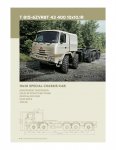
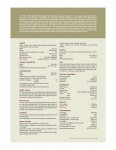
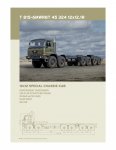
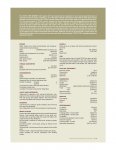
So for Tatra to provide all-wheel steering for a 6x6 would be child's play.
Also see https://www.facebook.com/Ditzj.de/posts/477318989063784?stream_ref=10 , http://www.tatra.ru/underwood/download/files/tatra-phoenix-t158-8p5r33-6x6-agrotruck.pdf , http://www.fatrade.ba/datoteke/pdf/00020.pdf , http://www.fatrade.ba/datoteke/pdf/00019.pdf , http://www.miltechin.com/tatra-10x10-special-off-road-chassis/ , and http://www.miltechin.com/tatra-12x12-special-off-road-chassis/ . And for further discussion of Tatra all-wheel steering right here on ExPo, see http://www.expeditionportal.com/forum/threads/80606-MAN-schematics-diagram .
Because "seeing is believing", and seeing video is even better, below is a video of a 6x6 Tatra semi carving out the smallest turning radius imaginable, thanks to rear-axle steering:
****************************************
5. VSE All-Wheel Steering
On the ExPo thread found a link to a Dutch company called "VSE", that specializes in steering and suspension systems -- see http://www.v-s-e.com/en , http://www.v-s-e.com/en/sectors/trucks , http://www.v-s-e.com/en/products/steering/ets-for-trucks , http://www.v-s-e.com/uploads/documents/lr-brochure-vse-2012-uk.pdf , and http://www.v-s-e.com/uploads/documents/leaflet-ets-truck-en-lr.pdf . So it would appear that ZF industries is not the only game in town.
Here is a video of VSE rear-axle steering for a truck:
Note that "VS-Mont", a Slovak company, appears to specialize in the manufacture of tippers, and should not to be confused with VSE -- see http://www.vsmont.sk/index.php?lang=en .
The VSE website has some additional videos for multiple-axle steering systems for "Trailers", "Transport", and "Agriculture", in addition to "Trucks" -- see http://www.v-s-e.com/en , http://www.v-s-e.com/en/sectors/trailers , http://www.v-s-e.com/en/products/steering/ets-for-trailers , http://www.v-s-e.com/uploads/documents/leaflet-ets-trailer-en.pdf , http://www.v-s-e.com/en/sectors/transport , and http://www.v-s-e.com/en/sectors/agriculture :
[video=youtube;OVNptRyQqQ8]http://www.youtube.com/watch?v=OVNptRyQqQ8 [/video]
****************************************
6. Changed the Title of the Thread
Note that I changed the title of the thread slightly, to track where we seem to be going. Included "MAN or Tatra" in the title, because those are the chassis choices, and dropped "progressive coil suspension", because this is only a feature of the MAN SX-45. The Tatra suspension is different. I was tempted to add "6x6x6 or 8x8x8", because that's the technical way to describe all-wheel drive + all-wheel steering trucks. But 6x6 or 8x8 is dramatic enough, and combined with the other words in the title, should prove sufficiently discriminating for the search engines.
Yes, I know, there's a danger in changing the title, because others may have already linked to the thread with the old title. But it's still early days, and I wanted to get "MAN" and "TATRA" into the title, as well as "Torsion-Free Frame".
****************************************
7. Additional Problems with Pushers
Your list of the disadvantages of different engine placements is terrific and comprehensive.
However, for “Pusher” you need to add (1) ventilation problems, (2) imperfect access, and (3) loss of camper design flexibility. Pusher diesels are notorious for having problems with ventilation and cooling, and access is not as good as CBE.
But most importantly, a pusher will end up dictating interior design to such an extent, that only a very limited range of floor-plans will be possible. As an individual you might be willing to live with that, but part of my thesis project will necessitate demonstrating how such a concept could be "design flexible", with lots of different floor-plans feasible. Integrated "one-room design", as you nicely summarized things, is one step in the right direction. But having a flexible design-space within that one room will also be important.
****************************************
8. Electric and Hybrid
Haf-E and egn:
I've studied electric propulsion and hybrid systems some, but get the feeling that to participate effectively in such a discussion, will need to read up more. In particular, about such systems applied to military and/or unusual, “extreme environment” applications. So a short-list of 10 - 20 links, articles, and book titles would be great, if you two would be willing.
A committed “auto-dictat”, I eat books for breakfast (so to speak). I also enjoy the search-process for new information. But speed here is of the essence, because I will need to produce a draft-proposal in a few months, with concept and sketches. So again, any advice/direction you two might provide (and any others reading this!), would be most appreciated. Up until now I had just assumed that the vehicle would have a diesel engine, preferably Euro 3, and probably military surplus. But if you guys can convince me that hybrid-electric is the way to go, then I would design for that.
Transportation design has become a series of niche specializations (aircraft, rail, naval, car, truck, military, civilian, etc. etc.), and so too, interior versus exterior. My strong suit (and greatest interest) has been interior design, but with that said, I probably now know more about the vehicular parameters of expedition motorhome design, in particular, than any of my instructors. So again, just some reading advice, so that if I do propose electric/hybrid propulsion for a "TerraLiner", I will sound like I know what I'm talking about…..:ylsmoke:
All best wishes,
Biotect
CONTINUED FROM PREVIOUS POST
****************************************
2. Tatra Backbone Tube and Frameless Chassis
Here are some more animations of Tatra's backbone tube + swinging half-axle suspension system, along with the animation of Tatra's "Phoenix" truck assembly, previously posted, and an equivalent animated-build for a Tatra 6x6 off-road Firetruck:
[video=youtube;OkgkqOyNZdo]http://www.youtube.com/watch?v=OkgkqOyNZdo [/video]
[video=youtube;5UkAyAzhmsA]http://www.youtube.com/watch?v=5UkAyAzhmsA [/video]
Here are some additional links, just in case these embeds ever go dead: http://www.youtube.com/watch?v=kcwUst1OWQ4 , http://www.youtube.com/watch?v=rglhG1I0lGM, http://www.youtube.com/watch?v=5UkAyAzhmsA , http://tbilisitube.com/en/video/5UkAyAzhmsA/How-the-new-TATRA-Phoenix-all-wheel-drive-truck-is-built, http://www.youtube.com/watch?v=94FOsEpT-9U , http://www.youtube.com/watch?v=vMq0V6t28qE , http://www.tatraphoenix.com/en/photos-and-video/ , http://www.trucksplanet.com/catalog/model.php?id=1393 , and http://www.youtube.com/results?search_query=tatra&suggested_categories=2&page=1 .
The following are articles about backbone tubes and swinging half-axle suspension systems, in general: http://en.wikipedia.org/wiki/Backbone_chassis , http://www.autozine.org/technical_school/chassis/tech_chassis.htm , http://en.wikipedia.org/wiki/Swing_axle , http://wikicars.org/en/Swing_axle , and http://www.autozine.org/technical_school/suspension/tech_suspension2.htm#Swing .
And see the fascinating Lego Mindstorms thread, “What's so special about Tatra's Suspension?”, at http://www.eurobricks.com/forum/index.php?showtopic=69804 .
A nice collection of Tatra backbone-tube images at http://www.yuejin-truck.com/crazy/tatra-chassis-pictures-to-appreciate.html/comment-page-1 ; more general images at http://commons.wikimedia.org/wiki/Tatra_vehicles ; and a good gallery of Phoenix truck images at http://byznys.ihned.cz/c1-56234950-tatra-vyrabi-mene-nez-loni#fotogalerie-gf139701-17-1386170 .
****************************************
3. All About Tatra
The following is a great website for all things Tatra, at http://www.tatraworld.nl , http://www.tatraworld.nl/events-calendar/ , http://www.tatraworld.nl/tatra-clubs/ , http://www.tatraworld.nl/tatra-weblinks/ , http://www.tatraworld.nl/tatra-photo-videosites/ , and http://www.tatraworld.nl/2010/03/08/new-truck-book/ . This website also seems particularly good for Tatra DAKAR coverage -- see http://www.tatraworld.nl/category/racing-rallying/ , http://www.tatraworld.nl/category/racing-rallying/page/2/ , http://www.tatraworld.nl/category/racing-rallying/page/3/ , http://www.tatraworld.nl/category/racing-rallying/page/4/ , http://www.tatraworld.nl/category/racing-rallying/page/5/ , http://www.tatraworld.nl/category/racing-rallying/page/6/ , http://www.tatraworld.nl/category/racing-rallying/page/7/ , etc. etc. Yes, the Tatra DAKAR coverage pages on this website seem to go on and on.......:rally_guys:......
For Tatra Dakar 2014 specifically, see http://www.tatraworld.nl/2014/01/20/ales-loprais-looks-back/ , http://www.tatraworld.nl/2014/01/18/both-trucks-of-the-bonver-dakar-project-finished-the-dakar/ , http://www.tatraworld.nl/2014/01/18...ge-victory-karginov-the-overall-dakar-winner/ , http://www.tatraworld.nl/2014/01/19/loprais-comments-on-the-dakar-2014/ , http://www.tatraworld.nl/2014/01/19/first-ever-phoenix-to-reach-the-dakar-finish/ , http://www.tatraworld.nl/2014/01/17...oij-and-karginov-battle-for-the-overall-lead/ , etc. etc.
The following ExPo threads all mention "Tatra", and have discussions very relevant to this thread, especially the first four: http://www.expeditionportal.com/forum/threads/81279-Tatra-T815-my-saga?highlight=tatra , http://www.expeditionportal.com/for...-truck-is-now-motorhome-RV-expedition-vehicle , http://www.expeditionportal.com/forum/threads/119231-New-Tatra-Truck-straight-axles-with-portals-6x6 ( started by Haf-E....
And for a good, short history of Tatra, see:
****************************************
4. Tatra can do All-Wheel Steering
egn, you mentioned all-wheel steering again, and perusing the Tatra military brochure, turns out that Tatra has abundant experience with 5[SUP]th[/SUP]-axle steering, in its 10x10 trucks; and with 5[SUP]th[/SUP] + 6[SUP]th[/SUP] axle steering, in its 12x12 trucks. See pages 60 – 65 at http://www.tatra.cz/underwood/download/files/tatra-military-vehicles_en-2.pdf , and also see the jpgs below:




So for Tatra to provide all-wheel steering for a 6x6 would be child's play.
Also see https://www.facebook.com/Ditzj.de/posts/477318989063784?stream_ref=10 , http://www.tatra.ru/underwood/download/files/tatra-phoenix-t158-8p5r33-6x6-agrotruck.pdf , http://www.fatrade.ba/datoteke/pdf/00020.pdf , http://www.fatrade.ba/datoteke/pdf/00019.pdf , http://www.miltechin.com/tatra-10x10-special-off-road-chassis/ , and http://www.miltechin.com/tatra-12x12-special-off-road-chassis/ . And for further discussion of Tatra all-wheel steering right here on ExPo, see http://www.expeditionportal.com/forum/threads/80606-MAN-schematics-diagram .
Because "seeing is believing", and seeing video is even better, below is a video of a 6x6 Tatra semi carving out the smallest turning radius imaginable, thanks to rear-axle steering:
****************************************
5. VSE All-Wheel Steering
On the ExPo thread found a link to a Dutch company called "VSE", that specializes in steering and suspension systems -- see http://www.v-s-e.com/en , http://www.v-s-e.com/en/sectors/trucks , http://www.v-s-e.com/en/products/steering/ets-for-trucks , http://www.v-s-e.com/uploads/documents/lr-brochure-vse-2012-uk.pdf , and http://www.v-s-e.com/uploads/documents/leaflet-ets-truck-en-lr.pdf . So it would appear that ZF industries is not the only game in town.
Here is a video of VSE rear-axle steering for a truck:
Note that "VS-Mont", a Slovak company, appears to specialize in the manufacture of tippers, and should not to be confused with VSE -- see http://www.vsmont.sk/index.php?lang=en .
The VSE website has some additional videos for multiple-axle steering systems for "Trailers", "Transport", and "Agriculture", in addition to "Trucks" -- see http://www.v-s-e.com/en , http://www.v-s-e.com/en/sectors/trailers , http://www.v-s-e.com/en/products/steering/ets-for-trailers , http://www.v-s-e.com/uploads/documents/leaflet-ets-trailer-en.pdf , http://www.v-s-e.com/en/sectors/transport , and http://www.v-s-e.com/en/sectors/agriculture :
[video=youtube;OVNptRyQqQ8]http://www.youtube.com/watch?v=OVNptRyQqQ8 [/video]
****************************************
6. Changed the Title of the Thread
Note that I changed the title of the thread slightly, to track where we seem to be going. Included "MAN or Tatra" in the title, because those are the chassis choices, and dropped "progressive coil suspension", because this is only a feature of the MAN SX-45. The Tatra suspension is different. I was tempted to add "6x6x6 or 8x8x8", because that's the technical way to describe all-wheel drive + all-wheel steering trucks. But 6x6 or 8x8 is dramatic enough, and combined with the other words in the title, should prove sufficiently discriminating for the search engines.
Yes, I know, there's a danger in changing the title, because others may have already linked to the thread with the old title. But it's still early days, and I wanted to get "MAN" and "TATRA" into the title, as well as "Torsion-Free Frame".
****************************************
7. Additional Problems with Pushers
Your list of the disadvantages of different engine placements is terrific and comprehensive.
However, for “Pusher” you need to add (1) ventilation problems, (2) imperfect access, and (3) loss of camper design flexibility. Pusher diesels are notorious for having problems with ventilation and cooling, and access is not as good as CBE.
But most importantly, a pusher will end up dictating interior design to such an extent, that only a very limited range of floor-plans will be possible. As an individual you might be willing to live with that, but part of my thesis project will necessitate demonstrating how such a concept could be "design flexible", with lots of different floor-plans feasible. Integrated "one-room design", as you nicely summarized things, is one step in the right direction. But having a flexible design-space within that one room will also be important.
****************************************
8. Electric and Hybrid
Haf-E and egn:
I've studied electric propulsion and hybrid systems some, but get the feeling that to participate effectively in such a discussion, will need to read up more. In particular, about such systems applied to military and/or unusual, “extreme environment” applications. So a short-list of 10 - 20 links, articles, and book titles would be great, if you two would be willing.
A committed “auto-dictat”, I eat books for breakfast (so to speak). I also enjoy the search-process for new information. But speed here is of the essence, because I will need to produce a draft-proposal in a few months, with concept and sketches. So again, any advice/direction you two might provide (and any others reading this!), would be most appreciated. Up until now I had just assumed that the vehicle would have a diesel engine, preferably Euro 3, and probably military surplus. But if you guys can convince me that hybrid-electric is the way to go, then I would design for that.
Transportation design has become a series of niche specializations (aircraft, rail, naval, car, truck, military, civilian, etc. etc.), and so too, interior versus exterior. My strong suit (and greatest interest) has been interior design, but with that said, I probably now know more about the vehicular parameters of expedition motorhome design, in particular, than any of my instructors. So again, just some reading advice, so that if I do propose electric/hybrid propulsion for a "TerraLiner", I will sound like I know what I'm talking about…..:ylsmoke:
All best wishes,
Biotect
Last edited:
mog
Kodiak Buckaroo
The Purpose of this Thread
-
This thread explores the possibility of a different kind of very large, 6x6 or 8x8 off-road expedition vehicle: a “fully integrated” design in which the cab fuses seamlessly with the camper body.
-
This is a design "thesis project" that I will be working on, in earnest next fall, i.e. beginning in September. I've been anticipating a bit, trying to determine the engineering constraints. Please see my first post on page 33 of this thread, for a more thorough explanation.
-
The basic issue is this: from a purely design point of view, expedition motorhomes seem awfully space-wasteful. In the lingo of the wider RV industry, they are “non-integrated” designs in which a body is simply placed on a truck, whose cab remains separate. So the seating gets duplicated. This contrasts markedly with the most advanced European designs, for instance, Hymer motorhomes. In almost all Hymer RVs, the driver's seat and passenger seat swivel 180 degrees, and do “double-duty” as dinette seating. Again, please see my post on page 33 for pictures.
Perhaps since we are on page 14 here and page 36 on the ‘other thread', you could refresh the goal of your thesis. It seems that the idea of a ‘fully integrated' cab with the cabin is to gain (use efficiently) the space the cab occupies (say 1.5 meters) by integrating it into the cabin. Just as ‘we' decided that increasing the length of the vehicle by 1.5 meters (10%) to use the ‘better' CBE layout, why re-invent the wheel (or truck in this case) to reduce it's length by 1.5 meters (10%). It would seem that a vehicle that is >10 meters by its shear size does not need to use space as effectively as a smaller vehicle. How may people will be using such a vehicle at one time? If 4 people can lounge and sleep in my 5.3 meter truck, does that equate to a need for 8 persons in a 10+ meter truck to be 'efficient', and hence those extra two seats (driver & passenger) will be needed?
-
Two of the goal of this thesis “cabin efficiently” and “cost-effectively” just does not equate in my view with a huge vehicle. According to this thread, it can not even find a camping space (pitch) in your home country. Add the purchase cost of the bare truck, the workshop space for a build (it sure is not going to fit in a home garage for the build) massive amount of materials (3 times+ a ‘normal' build), huge costs of consumables (fuel, tire, lubricants, etc), road tariffs, shipping costs, ferry fees, and if necessary recovery costs (ouch!) I don't see the word efficiently anywhere in that equation.
-
Can huge be ‘efficient'? Yes of course. A Boeing 747 fully loaded with passengers or cargo is more efficient that 3 Boeing 727s hauling the same load. A class 8 Semi-truck hauling 40,000 pounds of cargo in place of 3 class 5 trucks hauling that cargo is more efficient. Or closer to this thread, one of those huge African tourist rough road trucks taking 28 people on a tour is more efficient that 4 smaller trucks doing the same job. But when your passenger load is going to be 2-6 people (I think once you get into a vehicle cost range of 500,000+ Euros, you will not see multiple families going together to share costs), huge does not equal efficient.
-
Don't get me wrong, I LOVE these huge rough road / desert vehicles. I download every photo and drool over every build, story, adventure. I see 'cool', 'awesome' 'great engineering', but I don't see 'efficient'.
-
If we are splitting hairs over that 1.5 meters we gave away to use a CBE design by incorporating a ridge integrated body to gain back the 1.5 meters of the cab, I think Unicat already has the answer. Just extend the rear 2 meters when you park.
-

biotect
Designer
Hi mog,
Points well taken.
I guess I can only refer you back to egn's post a few pages back, which referenced the “Concorde” LinerPlus integrated interior. Integrated interiors are strongly preferred in the world of American Class-A motorhomes, as well as German “Liners”. These are all big vehicles: the biggest American Class A's can run up to 13.7 m. If any vehicles could keep their cabs separate from their campers, it would be these. And yet they are fully integrated.
********************************
1. The Aesthetics of Spaciousness
The issue here is not just about space, narrowly conceived as just so many square meters of area, or so many meters of length. It's also about usability, and the "aesthetics of spaciousness." For instance, it's really nice for the passenger to be able to get up and go to the fridge for a snack while the vehicle is driving. Earthroamer acknowledges this, by advertising that it creates a “pass-through” cut-out between cab and camper that's especially large, although still bendable bellows-type. A small crawl-through is not equivalent.
But even a large cut-out is not quite as attractive, aesthetically speaking, as a fully integrated “one-room” design. There's an big difference in the feeling of spaciousness that integrated designs provide, if only because the enormous glass surface of the vehicle's window-shield becomes an additional panoramic picture-window. You might have to experience an American Class A or a German Liner first-hand, to understand what I am talking about here. But it should also be reasonably evident from those Concorde pictures that egn and myself posted, and especially from the 360 degree views on Concorde's website – see http://www.demo.spherovision.de/me/concorde_liner/0_spherovision_webpan3/sv_wp3_viewer.html and http://www.demo.spherovision.de/me/...ion/0_spherovision_webpan3/sv_wp3_viewer.html . Please take a look at these panoramic views. Maybe such a feeling of spaciousness and such views are not important to you. But these are important to many potential customers in the motorhome market.
Now again, in those Concorde 360-degree views, even though the vehicles are huge, the seats can swivel, and they do double-duty. Furthermore, Concordes will have a second pull-down bed located directly above the driving seats. In a cab-separate-from-camper design, however, a pull-down bed of this sort is not spatially possible. Again, please refer to egn's comments on this topic in particular, earlier in the thread.
Sure, maybe pull-down beds can be located elsewhere in a cab-seperate-from-camper design. But perhaps not in a way where the space flows as naturally and beautifully as it does in a Concorde. "Space" is not the same thing as spaciousness, and even small RV's can feel "spacious" if properly designed. Whereas a large motorhome can feel positively un-spacious, simply because its design is not that sophisticated.
Finally, from a design point of view, I've also indicated that I want to explore the possibility of a full-length, XP-style pop-up, with an interior similar to UniCat's split-level designs. I've not yet fully explained what I have in mind here. But there is one thing I can say at this stage: cab-separate-from-camper cannot serve as the basis for such a pop-up design.
********************************
2. Length and Price-point
As regards length and price-point, we've made it clear that we are not aiming for a 6.0 m vehicle that might cost less than 300,000 . Rather, we are aiming for a vehicle 8.0 – 10,0 m long, that will probably cost 600,000 to 1,000,000. You might then retort that there is no market whatsoever for such a vehicle, and maybe you are right. But it's worth noting that Newell builds 30 high-end luxury coaches per year, and almost always they cost more than 1,000,000 each – see http://webcache.googleusercontent.c...3/prweb11717279.htm+&cd=1&hl=en&ct=clnk&gl=uk and http://www.newellcoach.com . Now opting for a Tatra chassis might help, because the Tatra chassis will probably cost less than a MAN SX-45 equivalent. But clearly we are not too worried about that, because we've set the “price-point” so high in any case.
If one wants a mid-size integrated off-road vehicle, a Sprinter conversion is clearly the way to go. But personally speaking, I am not interested in exploring that, because in a sense it has already been done. Sure, as far as I know, nobody has specifically tried mounting a Sprinter body on top of a Unimog chassis. And sure, that could be an interesting thing to explore, up to a point. But the interior design considerations generated will probably prove not much different from those already explored in hundreds of van conversions by Sportsmobil -- see http://www.sportsmobile.com , http://www.sportsmobile.com/2_eb-110s.html , http://www.sportsmobile.com/2_lb-110s.html , http://www.sportsmobile.com/3_windsurfer.html , http://www.sportsmobile.com/4_4x4sports.html , http://www.sportsmobile.com/6_dyo-info.html , etc. etc.
So if someone else wants to explore the "Sprintermog", more power to them, and they should start another thread. They can even use "Sprintermog" in the thread title, which I just coined off the top of my head.....:sombrero: But "Sprintermog design" has not been the focus of this thread. This thread, instead, has been about "TerraLiner design" ( for want of a better name....)
As regards the availability of campsites or pitches, an 8 – 10 m long motorhome will have no trouble finding campsites in North America. Europe is not the world, and Europe is not even most of the First World. American campsites are long-habituated to enormous Class A motorhomes that run well above 10 m. But happily enough, egn has also assured us that Europe is not that much different from North America, and egn has stated that one encounters lots of German “Liner” class motorhomes running upwards of 9 m at European campsites. And egn speaks from experience: he actually owns and uses a 9.3 m expedition motorhome. Please refer back a few pages, to egn's debate with grizzlyj about exactly this bone of contention.
********************************
3. The Value of Design Experiments
Now sure, this may prove an “empty” design exercise, or maybe not. But one thing seems fairly clear: even as mere design exercise, it probably has not been tried before.
Furthermore, when design exercises get published, even if they are never built, they have an odd way of inspiring other designers – and even manufacturers – to take the designs a few steps further. For instance, back in 2007 Nissan unveiled the NV200 concept van, which featured a rear-extending slide-out:
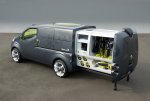
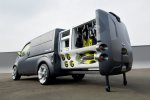
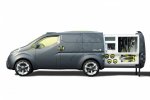
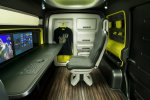

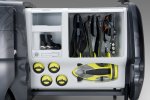
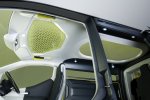
See http://www.caranddriver.com/news/nissan-nv200-concept-auto-shows , http://www.caranddriver.com/photos-07q4/107533/nissan-nv200-concept-interior-photo-118935 , http://www.auto-power-girl.com/photo_gallery/nissan/nissan_nv200_concept_passenger_version-3113 , http://www.worldcarfans.com/10710103421/nissan-nv200-concept-van-first-info-revealed , http://www.conceptcarz.com/vehicle/z14288/Nissan-NV200-Concept.aspx , and http://www.netcarshow.com/nissan/2007-nv200_concept/ .
At the time some questioned the "practicality" of "feasibility" of such a long slide-out, at a price-point available to the average consumer. But now, circa 2014, Danbury Caravans in Britain is selling real-world versions of something broadly similar, which they've named the "Doubleback"":
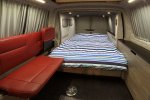


See http://www.danburymotorcaravans.com , http://www.danburymotorcaravans.com/models/ , http://www.danburymotorcaravans.com/models/model.aspx?modelID=23 , http://www.danburymotorcaravans.com/models/modeltype.aspx?modelID=23&modeltypeID=15 , and http://www.danburymotorcaravans.com/models/model.aspx?modelID=23 .
Also see Danbury's very beautiful interior detailing at http://www.danburymotorcaravans.com/models/model.aspx?modelID=2 , http://www.danburymotorcaravans.com/models/modeltype.aspx?modelID=2&modeltypeID=10 , http://www.danburymotorcaravans.com/models/modeltype.aspx?modelID=2&modeltypeID=13 , and http://www.danburymotorcaravans.com/models/modeltype.aspx?modelID=2&modeltypeID=12 .
Here are some videos of the Danbury T5 "Doubleback", as well as their "Active", "Royale", and "Surf" van conversions:
[video=youtube;oe5rpsxQsrM]http://www.youtube.com/watch?list=UUd7Rr8amPqsSrsgLUV__OVg&v=oe5rpsxQsrM[/video]
Perhaps Danbury did not get the idea from Nissan, although the timeline is suggestive. It's also possible that Nissan, in turn, got the idea from somewhere else.....
So simply as a design exercise, the "TerraLiner" may have value. And probably at price-points and in markets substantially different from its original target. And hey, at the very least, this design exercise might give you another set of images to "drool over".....:sombrero:
********************************
4. "Space-Inefficient" as Euphemism
Are swivel seats really necessary, in Class A motorhomes that are 10.0 - 13.7 m long? Do they allow for a more "efficient" use of space in such a vehicle? Well, if you're habituated to a 5 m motorhome, you'll be skeptical, and you'll object to the use of the word "efficient". But there's no question that the people who purchase these large integrated designs love those swivel seats, and do think of them as "efficient".
However, agreed, "space-inefficient" was probably not a perfect description....:coffeedrink:
In the beginning I chose to use the phrase "space-inefficient", in part because many participants on ExPo seem engineering-oriented, and not aesthetically-inclined. So I did not want to use aesthetically loaded words like "cramped", "gloomy-except-for-the-skylights", "claustrophobic", "prison-cell-like", "headroom-challenged", etc. etc. I also can't use such words in relation to a specific motorhome, for fear of upsetting a manufacturer. So "space-inefficient" was a nice, rather empty euphemism drained of emotional and aesthetic content; the kind of euphemism that scientifically-oriented types tend to go for.....
After all, I had to communicate my design concerns somehow.
Please just know that, from the very beginning, my design concerns were much broader than "inefficient use of space." I already tried to communicate some of that, for instance, in the post where I celebrated excellent Airstream and ARC interior design.
All best wishes,
Biotect
Points well taken.
I guess I can only refer you back to egn's post a few pages back, which referenced the “Concorde” LinerPlus integrated interior. Integrated interiors are strongly preferred in the world of American Class-A motorhomes, as well as German “Liners”. These are all big vehicles: the biggest American Class A's can run up to 13.7 m. If any vehicles could keep their cabs separate from their campers, it would be these. And yet they are fully integrated.
********************************
1. The Aesthetics of Spaciousness
The issue here is not just about space, narrowly conceived as just so many square meters of area, or so many meters of length. It's also about usability, and the "aesthetics of spaciousness." For instance, it's really nice for the passenger to be able to get up and go to the fridge for a snack while the vehicle is driving. Earthroamer acknowledges this, by advertising that it creates a “pass-through” cut-out between cab and camper that's especially large, although still bendable bellows-type. A small crawl-through is not equivalent.
But even a large cut-out is not quite as attractive, aesthetically speaking, as a fully integrated “one-room” design. There's an big difference in the feeling of spaciousness that integrated designs provide, if only because the enormous glass surface of the vehicle's window-shield becomes an additional panoramic picture-window. You might have to experience an American Class A or a German Liner first-hand, to understand what I am talking about here. But it should also be reasonably evident from those Concorde pictures that egn and myself posted, and especially from the 360 degree views on Concorde's website – see http://www.demo.spherovision.de/me/concorde_liner/0_spherovision_webpan3/sv_wp3_viewer.html and http://www.demo.spherovision.de/me/...ion/0_spherovision_webpan3/sv_wp3_viewer.html . Please take a look at these panoramic views. Maybe such a feeling of spaciousness and such views are not important to you. But these are important to many potential customers in the motorhome market.
Now again, in those Concorde 360-degree views, even though the vehicles are huge, the seats can swivel, and they do double-duty. Furthermore, Concordes will have a second pull-down bed located directly above the driving seats. In a cab-separate-from-camper design, however, a pull-down bed of this sort is not spatially possible. Again, please refer to egn's comments on this topic in particular, earlier in the thread.
Sure, maybe pull-down beds can be located elsewhere in a cab-seperate-from-camper design. But perhaps not in a way where the space flows as naturally and beautifully as it does in a Concorde. "Space" is not the same thing as spaciousness, and even small RV's can feel "spacious" if properly designed. Whereas a large motorhome can feel positively un-spacious, simply because its design is not that sophisticated.
Finally, from a design point of view, I've also indicated that I want to explore the possibility of a full-length, XP-style pop-up, with an interior similar to UniCat's split-level designs. I've not yet fully explained what I have in mind here. But there is one thing I can say at this stage: cab-separate-from-camper cannot serve as the basis for such a pop-up design.
********************************
2. Length and Price-point
As regards length and price-point, we've made it clear that we are not aiming for a 6.0 m vehicle that might cost less than 300,000 . Rather, we are aiming for a vehicle 8.0 – 10,0 m long, that will probably cost 600,000 to 1,000,000. You might then retort that there is no market whatsoever for such a vehicle, and maybe you are right. But it's worth noting that Newell builds 30 high-end luxury coaches per year, and almost always they cost more than 1,000,000 each – see http://webcache.googleusercontent.c...3/prweb11717279.htm+&cd=1&hl=en&ct=clnk&gl=uk and http://www.newellcoach.com . Now opting for a Tatra chassis might help, because the Tatra chassis will probably cost less than a MAN SX-45 equivalent. But clearly we are not too worried about that, because we've set the “price-point” so high in any case.
If one wants a mid-size integrated off-road vehicle, a Sprinter conversion is clearly the way to go. But personally speaking, I am not interested in exploring that, because in a sense it has already been done. Sure, as far as I know, nobody has specifically tried mounting a Sprinter body on top of a Unimog chassis. And sure, that could be an interesting thing to explore, up to a point. But the interior design considerations generated will probably prove not much different from those already explored in hundreds of van conversions by Sportsmobil -- see http://www.sportsmobile.com , http://www.sportsmobile.com/2_eb-110s.html , http://www.sportsmobile.com/2_lb-110s.html , http://www.sportsmobile.com/3_windsurfer.html , http://www.sportsmobile.com/4_4x4sports.html , http://www.sportsmobile.com/6_dyo-info.html , etc. etc.
So if someone else wants to explore the "Sprintermog", more power to them, and they should start another thread. They can even use "Sprintermog" in the thread title, which I just coined off the top of my head.....:sombrero: But "Sprintermog design" has not been the focus of this thread. This thread, instead, has been about "TerraLiner design" ( for want of a better name....)
As regards the availability of campsites or pitches, an 8 – 10 m long motorhome will have no trouble finding campsites in North America. Europe is not the world, and Europe is not even most of the First World. American campsites are long-habituated to enormous Class A motorhomes that run well above 10 m. But happily enough, egn has also assured us that Europe is not that much different from North America, and egn has stated that one encounters lots of German “Liner” class motorhomes running upwards of 9 m at European campsites. And egn speaks from experience: he actually owns and uses a 9.3 m expedition motorhome. Please refer back a few pages, to egn's debate with grizzlyj about exactly this bone of contention.
********************************
3. The Value of Design Experiments
Now sure, this may prove an “empty” design exercise, or maybe not. But one thing seems fairly clear: even as mere design exercise, it probably has not been tried before.
Furthermore, when design exercises get published, even if they are never built, they have an odd way of inspiring other designers – and even manufacturers – to take the designs a few steps further. For instance, back in 2007 Nissan unveiled the NV200 concept van, which featured a rear-extending slide-out:







See http://www.caranddriver.com/news/nissan-nv200-concept-auto-shows , http://www.caranddriver.com/photos-07q4/107533/nissan-nv200-concept-interior-photo-118935 , http://www.auto-power-girl.com/photo_gallery/nissan/nissan_nv200_concept_passenger_version-3113 , http://www.worldcarfans.com/10710103421/nissan-nv200-concept-van-first-info-revealed , http://www.conceptcarz.com/vehicle/z14288/Nissan-NV200-Concept.aspx , and http://www.netcarshow.com/nissan/2007-nv200_concept/ .
At the time some questioned the "practicality" of "feasibility" of such a long slide-out, at a price-point available to the average consumer. But now, circa 2014, Danbury Caravans in Britain is selling real-world versions of something broadly similar, which they've named the "Doubleback"":



See http://www.danburymotorcaravans.com , http://www.danburymotorcaravans.com/models/ , http://www.danburymotorcaravans.com/models/model.aspx?modelID=23 , http://www.danburymotorcaravans.com/models/modeltype.aspx?modelID=23&modeltypeID=15 , and http://www.danburymotorcaravans.com/models/model.aspx?modelID=23 .
Also see Danbury's very beautiful interior detailing at http://www.danburymotorcaravans.com/models/model.aspx?modelID=2 , http://www.danburymotorcaravans.com/models/modeltype.aspx?modelID=2&modeltypeID=10 , http://www.danburymotorcaravans.com/models/modeltype.aspx?modelID=2&modeltypeID=13 , and http://www.danburymotorcaravans.com/models/modeltype.aspx?modelID=2&modeltypeID=12 .
Here are some videos of the Danbury T5 "Doubleback", as well as their "Active", "Royale", and "Surf" van conversions:
[video=youtube;oe5rpsxQsrM]http://www.youtube.com/watch?list=UUd7Rr8amPqsSrsgLUV__OVg&v=oe5rpsxQsrM[/video]
Perhaps Danbury did not get the idea from Nissan, although the timeline is suggestive. It's also possible that Nissan, in turn, got the idea from somewhere else.....
So simply as a design exercise, the "TerraLiner" may have value. And probably at price-points and in markets substantially different from its original target. And hey, at the very least, this design exercise might give you another set of images to "drool over".....:sombrero:
********************************
4. "Space-Inefficient" as Euphemism
Are swivel seats really necessary, in Class A motorhomes that are 10.0 - 13.7 m long? Do they allow for a more "efficient" use of space in such a vehicle? Well, if you're habituated to a 5 m motorhome, you'll be skeptical, and you'll object to the use of the word "efficient". But there's no question that the people who purchase these large integrated designs love those swivel seats, and do think of them as "efficient".
However, agreed, "space-inefficient" was probably not a perfect description....:coffeedrink:
In the beginning I chose to use the phrase "space-inefficient", in part because many participants on ExPo seem engineering-oriented, and not aesthetically-inclined. So I did not want to use aesthetically loaded words like "cramped", "gloomy-except-for-the-skylights", "claustrophobic", "prison-cell-like", "headroom-challenged", etc. etc. I also can't use such words in relation to a specific motorhome, for fear of upsetting a manufacturer. So "space-inefficient" was a nice, rather empty euphemism drained of emotional and aesthetic content; the kind of euphemism that scientifically-oriented types tend to go for.....
After all, I had to communicate my design concerns somehow.
Please just know that, from the very beginning, my design concerns were much broader than "inefficient use of space." I already tried to communicate some of that, for instance, in the post where I celebrated excellent Airstream and ARC interior design.
All best wishes,
Biotect
Last edited:
egn
Adventurer
Quick question, egn:
So why would you propose that an expedition vehicle like this should have an electric engine (or engines, plural...)?
The answer is pretty easy:
With a hybrid/electric propulsion you can build in redundancy easily. I.e, you can spend every axle an extra motor, have multiple smaller engine/generator units, multiple battery modules, ... So the availability of such a drive-train could be much higher than with only one large engine and transmission.
Implementation can be a serial hybrid, but may be also be other types of hybrids like direct propulsion of one or more axles mechanical and the other axles electrical. The engines/generator modules may be replaced by fuel-cell modules later to push fuel-efficiency further.
Full electric trucks have been already build like E-Force.
Siemens even build hybrid vehicles for the eHighway.
Of course, this all is currently to expensive for general commercial use, but private expedition truck owners may not look at how economic such a solution is, but more if it is something exclusive with special capabilities. The most expensive part will currently be the battery modules. But the price may come down considerably in the future.
The advantage of an integrated solutions also that it can be optimized aero-dynamically very well, without to many compromises on aesthetics. Our integrated Concorde camper had a fuel consumption of about 14 l/100km, the same sized bed over cab camper version used 16+ l/100km.
Full electric buses used for regular line service use less than 1 kWh/km. . At highway speed such a vehicle will use about 1-2 kWh/km.
1 kWh storage currently costs about 500 US$/400 €. So to have a range of 100 km electric, you need 100-200 kWh of battery storage with prices ranging from about 50.000 US$/40.000€ to 100.000 US$/80.000€. I think an hybrid-electric propulsion should be possible for material costs of about 200.000 - 300.000 US$. You can save much with a lower range, but then you have to look whether the battery can support the necessary discharge rate.
As was already written, such a concept is also ideal to have an all-electric household and use only one fuel type in the vehicle. Solar power all over the vehicle with a few kWp can fuel the household and in emergency the car itself at least for a few km a day.
So if I would win a lottery and have then the money to spend, I would certainly look into such a concept. :wings:
Last edited:
egn
Adventurer
A friend currently sells his modified 6x6 KAT, which was created by cutting the last axle of an 8x8.

During my build I discovered that I was very restricted regarding placement of heavy load, because the front axle could easily hit the weight limit, if I don't distribute the load accordingly. This was the reason why I put the 600 kg lead acid battery bank at the back. The two axles at the back where placed there to support about 7 t (metric) added load. I build a weight distribution model to find out what axle loads I would get depending on the place where I place the load. This helped me to get a nearly even weight distribution, when the truck is loaded fully withabout 18 t (metric) with all equipment and fluids.
If I had thought about the possibility to cut an 8x8 to 6x6, then I probably would have chosen this variant. You can place all the load nearer to the center of the vehicle, giving better stability. And you are much more flexible regarding placement of load.
You mentioned all-wheel steering again. I never denied that it is possible. But, in my opinion it is done only when it is absolutely necessary to avoid the extra cost and reliability issues. The examples you brought are not very convincing to me, for this reason. That a 10x10 and longer vehicles need rear axle steering is logical to me, just to get a usable turning circle. And non off-road solutions are not really usable for an off-road vehicle, especially when the axles are not driven.
I don't have anything against all-wheel steering, but I say that this is not really necessary foran expedition camper if it has a reasonable length.
Regarding your mentioned disadvantages of Pusher, I don't really see all of them.
The Pusher doesn't have more ventilation problems as an SX with the cooler at the side. At slow spped off-road you don't have much head wind, that supports cooling. For this you need an independently driven cooling fan anyway. The KAT1 gets its cooling air for the air-cooled engine from through a small opening of about 20"x10" for the top of the cab. This is a heritage of the original amphibious design. As air-cooled engine it needs a lot more more cooling air as a similar water-cooled engine.
Yes, you have not so good access as with a CBE design, but most buses are pushers and this is no serious problem.
Yes, you loose some camper design flexibility, but I think the principle layout is fixed anyway. Most designs have the bedroom in the back, because this is just natural. In front you have public space, like living room and kitchen, as this space is seen from outside. In the back you have private space, with bath and bedroom(s). Or would you exchange both areas. That wouldn't look very logical to me. Ok, if we look at a non-integrated design, from my experience I would turn this design around and put bedroom in front and put the living room with a large hydraulic veranda to the back. I have thought about such an arrangement for my KAT, but couldn't find a good weight balance.
This isn't legally allowed, but is done very often. I wouldn't argue with this. I would really focus on the spaciousness feeling that you get in an integrated camper compared to a conventional camper of same length. Especially the large front window gives a great view, even you have to stay inside at bad weather. We liked our Concorde very much and would still have an integrated camper, if we wouldn't be focused on off-road adventures. The great panoramic view would win even more for an off-road vehicle, that s located in the free nature.
Of course, there are disadvantages also. You have to do something against heat introduced by the sun and curious and inquisitive people. For our Concorde we hat an electric jalousie behind the windshield. This kept at least the people out, bur for the SUN there has to been something more. The same is true for the side windows. Currently the are located very high, so there is no problem with people. But in hot climates you need an effective shielding to avoid the glass house effect.
If one needs space-efficiency depends on what the maximum acceptable size limits are and what you want to do with you vehicle. If you define a size limit like 10 m x 2.50 m x 3.50 m (lxwxh) and you want to use the vehicle for a few weeks a year, then you can accept some space-iefficiency if this causes some advantages regarding other issues like costs. But if you want to spend the next 10 - 20 years of your life in this vehicle, then you will think differently and look what you can put into this sized box.
The standard campers are all build for occasional use a few weeks a your with just enough storage space to survive a few days without supply. When we look at floor plans of such campers, we always think they have to few storage space. Even for such usual items like clothes or food for a few weeks isn't enough storage space. The supplies for water, grey, black water and fuel are large enough for a few days, but not large enough to stay a few weeks absent from civilization in pure nature.
So we decided to use the legal space as good as possible and made the vehicle about 4 m high. This allows us a box with about 2,50 m height with a 40 cm high double floor in the mid. This double floor is a treasure. It not only contains the grey and black water tanks, it also contains space for all food with dirct access in the kitchen. It also provides compartments accessible from outside for all the impotant things you have to take with you on a long journey. Placing this all in the cabin at about 1,50 m height, allows use to drive through deep rivers without potential damage by water. Everything is designed so that the water can go up as high to the underside of the cabin, and even somewhat higher. There are no holes at the underside of the cabin where water or something else can enter the cabin. The compartments below the cabin are water tight as possible and contain only things that aren't that important or are not sensitive to water.
The higher cabin also allowed us to put larger fresh water tanks into the cabin, and we got a very large garage in the back, large enough hold an atv, or a lot of other important supplies.
So in my opinion the design of an off-road expedition vehicles should also look at many details that make such a vehicle usable for long-term use. This automatically requires that the room space within the outline of the vehicle is used efficiently.
For me this is also a very important point that speaks against a CBE arrangement - you loose the space above the engine! :sombrero:
The space above the engine of a pusher can be used efficiently, either for the headroom above a bed, or if the engine goes up very high, for the storage of light items, to keep the center of gravity low.

During my build I discovered that I was very restricted regarding placement of heavy load, because the front axle could easily hit the weight limit, if I don't distribute the load accordingly. This was the reason why I put the 600 kg lead acid battery bank at the back. The two axles at the back where placed there to support about 7 t (metric) added load. I build a weight distribution model to find out what axle loads I would get depending on the place where I place the load. This helped me to get a nearly even weight distribution, when the truck is loaded fully withabout 18 t (metric) with all equipment and fluids.
If I had thought about the possibility to cut an 8x8 to 6x6, then I probably would have chosen this variant. You can place all the load nearer to the center of the vehicle, giving better stability. And you are much more flexible regarding placement of load.
You mentioned all-wheel steering again. I never denied that it is possible. But, in my opinion it is done only when it is absolutely necessary to avoid the extra cost and reliability issues. The examples you brought are not very convincing to me, for this reason. That a 10x10 and longer vehicles need rear axle steering is logical to me, just to get a usable turning circle. And non off-road solutions are not really usable for an off-road vehicle, especially when the axles are not driven.
I don't have anything against all-wheel steering, but I say that this is not really necessary foran expedition camper if it has a reasonable length.
Regarding your mentioned disadvantages of Pusher, I don't really see all of them.
The Pusher doesn't have more ventilation problems as an SX with the cooler at the side. At slow spped off-road you don't have much head wind, that supports cooling. For this you need an independently driven cooling fan anyway. The KAT1 gets its cooling air for the air-cooled engine from through a small opening of about 20"x10" for the top of the cab. This is a heritage of the original amphibious design. As air-cooled engine it needs a lot more more cooling air as a similar water-cooled engine.
Yes, you have not so good access as with a CBE design, but most buses are pushers and this is no serious problem.
Yes, you loose some camper design flexibility, but I think the principle layout is fixed anyway. Most designs have the bedroom in the back, because this is just natural. In front you have public space, like living room and kitchen, as this space is seen from outside. In the back you have private space, with bath and bedroom(s). Or would you exchange both areas. That wouldn't look very logical to me. Ok, if we look at a non-integrated design, from my experience I would turn this design around and put bedroom in front and put the living room with a large hydraulic veranda to the back. I have thought about such an arrangement for my KAT, but couldn't find a good weight balance.
For instance, it’s really nice for the passenger to be able to get up and go to the fridge for a snack while the vehicle is driving.
This isn't legally allowed, but is done very often. I wouldn't argue with this. I would really focus on the spaciousness feeling that you get in an integrated camper compared to a conventional camper of same length. Especially the large front window gives a great view, even you have to stay inside at bad weather. We liked our Concorde very much and would still have an integrated camper, if we wouldn't be focused on off-road adventures. The great panoramic view would win even more for an off-road vehicle, that s located in the free nature.
Of course, there are disadvantages also. You have to do something against heat introduced by the sun and curious and inquisitive people. For our Concorde we hat an electric jalousie behind the windshield. This kept at least the people out, bur for the SUN there has to been something more. The same is true for the side windows. Currently the are located very high, so there is no problem with people. But in hot climates you need an effective shielding to avoid the glass house effect.
If one needs space-efficiency depends on what the maximum acceptable size limits are and what you want to do with you vehicle. If you define a size limit like 10 m x 2.50 m x 3.50 m (lxwxh) and you want to use the vehicle for a few weeks a year, then you can accept some space-iefficiency if this causes some advantages regarding other issues like costs. But if you want to spend the next 10 - 20 years of your life in this vehicle, then you will think differently and look what you can put into this sized box.
The standard campers are all build for occasional use a few weeks a your with just enough storage space to survive a few days without supply. When we look at floor plans of such campers, we always think they have to few storage space. Even for such usual items like clothes or food for a few weeks isn't enough storage space. The supplies for water, grey, black water and fuel are large enough for a few days, but not large enough to stay a few weeks absent from civilization in pure nature.
So we decided to use the legal space as good as possible and made the vehicle about 4 m high. This allows us a box with about 2,50 m height with a 40 cm high double floor in the mid. This double floor is a treasure. It not only contains the grey and black water tanks, it also contains space for all food with dirct access in the kitchen. It also provides compartments accessible from outside for all the impotant things you have to take with you on a long journey. Placing this all in the cabin at about 1,50 m height, allows use to drive through deep rivers without potential damage by water. Everything is designed so that the water can go up as high to the underside of the cabin, and even somewhat higher. There are no holes at the underside of the cabin where water or something else can enter the cabin. The compartments below the cabin are water tight as possible and contain only things that aren't that important or are not sensitive to water.
The higher cabin also allowed us to put larger fresh water tanks into the cabin, and we got a very large garage in the back, large enough hold an atv, or a lot of other important supplies.
So in my opinion the design of an off-road expedition vehicles should also look at many details that make such a vehicle usable for long-term use. This automatically requires that the room space within the outline of the vehicle is used efficiently.
For me this is also a very important point that speaks against a CBE arrangement - you loose the space above the engine! :sombrero:
The space above the engine of a pusher can be used efficiently, either for the headroom above a bed, or if the engine goes up very high, for the storage of light items, to keep the center of gravity low.
Similar threads
- Replies
- 74
- Views
- 38K
- Replies
- 20
- Views
- 7K
- Replies
- 1
- Views
- 1K
- Replies
- 202
- Views
- 149K
- Replies
- 39
- Views
- 50K
